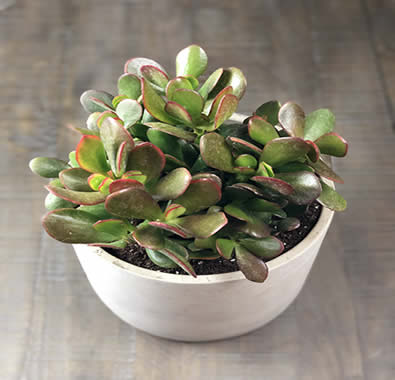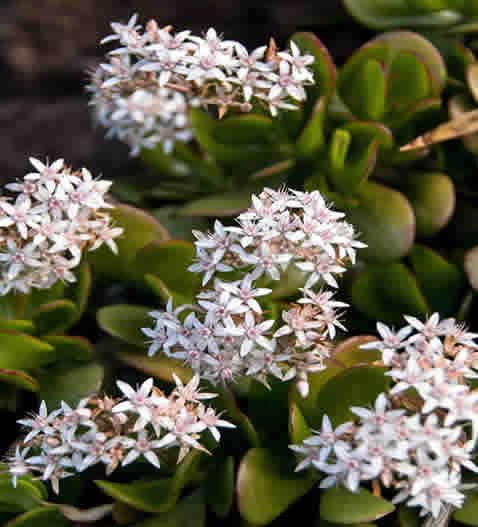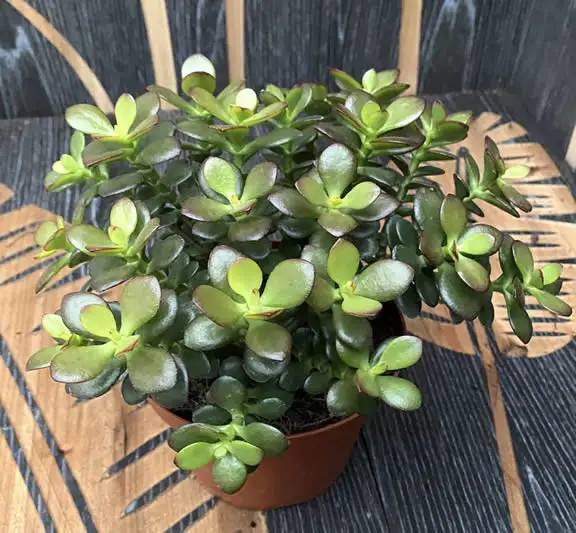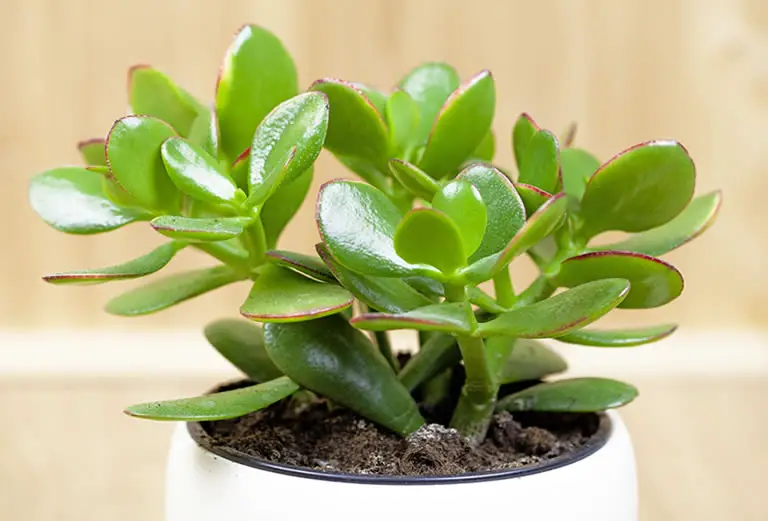The Jade Plant is a true houseplant icon. With its glossy green leaves, tree-like shape, and slow, steady growth, it’s long been loved as a symbol of prosperity and good luck. But beyond all the good energy and pretty foliage, Jade is also incredibly easy to grow—making it a favorite for beginners and collectors alike.
Whether you’re growing one on a windowsill, styling it into a mini bonsai, or letting it thrive in a sunny outdoor garden, Jade Plant is a no-fuss succulent that rewards patience with beauty and charm.
Let’s explore how to care for this timeless plant, indoors and out.
Table of Contents
- Where Jade Plant Comes From
- Why Jade Plant Is So Popular
- Light Needs: Sunshine Equals Strong Growth
- Soil: Gritty and Fast-Draining Is Best
- Watering: Low and Slow Wins
- Temperature and Humidity
- Fertilizing: A Light Touch Goes a Long Way
- Pruning and Shaping: Keep It Neat or Bonsai It Up
- How to Grow Jade Plant Outdoors
- Propagation: One Plant Becomes Many
- Common Jade Plant Problems
- Is Jade Plant Pet-Safe?
Where Jade Plant Comes From
Jade Plant (Crassula ovata) is native to South Africa and Mozambique, where it thrives in rocky, sun-drenched environments.

Its thick, water-storing leaves and woody stems have evolved to survive dry conditions, making it highly drought-tolerant and resilient.
In its natural habitat, it grows as a small shrub. Indoors, with enough light and time, it can reach up to three feet tall or more, often resembling a tiny tree.
Why Jade Plant Is So Popular
Aside from being adorable and easy to grow, Jade Plant holds cultural significance in many parts of the world.
It’s often given as a housewarming or wedding gift because it’s believed to attract wealth and luck—hence the nickname “money plant” or “friendship tree.”
Its rounded, fleshy leaves shine in the sunlight, sometimes developing red edges with strong light exposure.
As it matures, it develops thick, woody stems and can be trained into a lovely bonsai-style form.
With time, mature plants may even bloom in winter with clusters of small, starry white or pink flowers—a sweet reward for long-term care.
Light Needs: Sunshine Equals Strong Growth
Jade Plant thrives in bright, direct light.
Indoors, it should be placed near a sunny south- or west-facing window.

It needs at least 4–6 hours of direct sunlight daily to stay compact and healthy.
Without enough light, it can become leggy, droop, or drop leaves. If that happens, move it to a brighter spot or supplement with a grow light.
Outdoors, Jade does best in full sun to partial shade.
In especially hot climates, some afternoon shade helps prevent sunburn.
Soil: Gritty and Fast-Draining Is Best
Jade doesn’t like to sit in wet soil. Use a well-draining cactus or succulent mix, or make your own with:
-
2 parts potting soil
-
1 part coarse sand or perlite
-
1 part pumice or fine gravel
Good drainage is essential—always use a pot with a drainage hole to prevent root rot.
Watering: Low and Slow Wins
Jade Plant is extremely drought-tolerant.
It prefers the soak-and-dry method: water deeply, then wait until the soil is completely dry before watering again.
In spring and summer, you might water every 2–3 weeks.
In winter, watering may only be needed once a month or less.
Signs of overwatering include yellowing leaves, mushy stems, or leaf drop.
Underwatering may cause shriveled or puckered leaves, but the plant usually bounces back quickly once watered.
Always err on the dry side—it’s better to underwater than overwater.
Temperature and Humidity
Jade likes warmth and low humidity.
Ideal temps range from 60°F to 80°F. This falls into the typical temperature range of a home thus making the Jade Plant an excellent houseplant.

It can handle cooler temperatures down to around 40°F, but it’s not frost-tolerant.
If you move your Jade outdoors for summer, bring it back in before night temps dip into the 40s.
Indoors, keep it away from cold drafts and heat vents.
Fertilizing: A Light Touch Goes a Long Way
During its active growing season (spring and summer), feed your Jade once a month with a diluted balanced liquid fertilizer or a cactus/succulent-specific formula.
Skip feeding in fall and winter when the plant is resting.
Over-fertilizing can cause weak, leggy growth.
Pruning and Shaping: Keep It Neat or Bonsai It Up
Jade can be left to grow naturally or shaped into a small tree or bonsai.
Prune leggy stems or remove leaves to encourage branching and a fuller shape.
Use clean scissors and only prune during the growing season.
Any removed healthy pieces can be used for propagation!
Also remove any dried, shriveled, or yellowing leaves at the base to keep your plant tidy and healthy.
How to Grow Jade Plant Outdoors
If you live in USDA zones 9 to 11, you can grow Jade Plant outdoors year-round.
In cooler climates, it can enjoy the summer sun outdoors but should be brought inside before frost.
Tips for outdoor success:
-
Plant in full sun to partial shade. Brighter light brings out stronger growth and red-tinged leaf edges.
-
Use sandy or rocky soil that drains well.
-
Protect from heavy rain and cold temps.
-
Great in containers, rock gardens, and raised beds.

Jade Plant is also an excellent choice for xeriscaping or succulent borders.
It pairs beautifully with other drought-tolerant plants like Sedum, Echeveria, or Agave.
Propagation: One Plant Becomes Many
Jade is one of the easiest plants to propagate—just like Ghost Plant, you can start a new plant from a single leaf or stem.
Leaf method:
-
Gently remove a healthy leaf and let it callous for a day.
-
Lay it on well-draining soil and mist occasionally.
-
After a few weeks, roots and a baby plant will appear at the base.
Stem cuttings:
-
Take a healthy cutting 3–5 inches long.
-
Let it dry for 2–3 days to callous.
-
Plant in dry soil and water lightly after a week.
Propagation is especially successful in warm months and works both indoors and outdoors.
If you want more detailed instructions be sure to check out our article How to Propagate Jade Plant (Crassula ovata): All the Ways to Grow This Lucky Succulent.
Common Jade Plant Problems
-
Soft, mushy leaves: Almost always due to overwatering.
-
Legginess: Caused by not enough light.
-
Leaf drop: Can happen after overwatering, temperature shock, or moving the plant suddenly.
-
Red or wrinkled leaves: Normal with lots of sun or minor underwatering.
Most issues are easy to correct with a little adjustment in care.
Is Jade Plant Pet-Safe?
Jade Plant is mildly toxic to pets if ingested.
It can cause vomiting or lethargy in cats and dogs, so it’s best to keep it out of reach of curious animals.
Final Thoughts
Jade Plant (Crassula ovata) is a classic for a reason—easy to care for, full of personality, and rich with symbolism.
Whether you’re growing it for its beauty, its bonsai potential, or just because it brings good energy into your space, it’s a rewarding plant to have in your collection.

